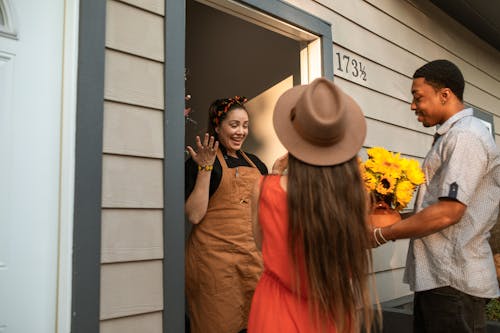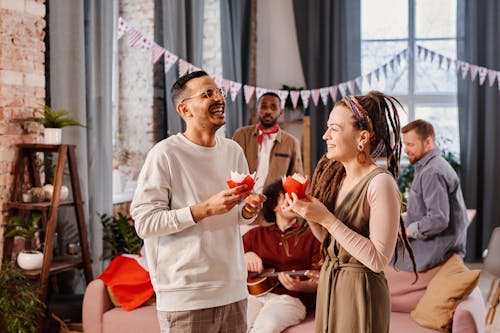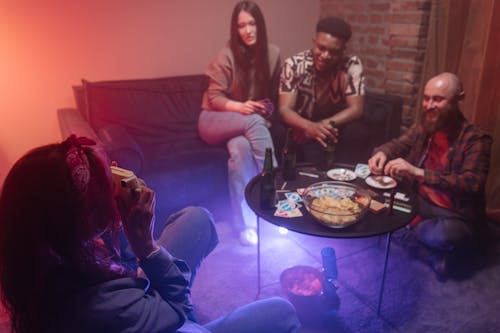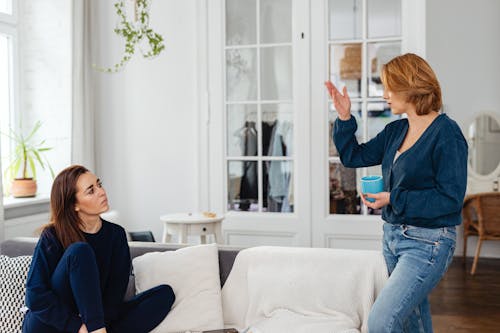1. Greeting Guests with Warmth—Not Formality

The moment someone steps through the door, tone sets the whole evening. A relaxed, genuine welcome—maybe with a hug, joke, or soft “we’re so glad you’re here”—makes the environment immediately approachable. You’re not auditioning as a host; you’re anchoring comfort. First impressions shouldn’t feel rehearsed.
Skip the stiff introductions or commentaries on tidiness. Instead, show them where to drop their bag, grab a drink, or kick off their shoes. When people feel seen—not analyzed—they settle faster. Home starts at hello.
2. Offering a Drop Zone for Coats, Bags, and Extras

It’s a small gesture, but it goes a long way: an open hook, a bench, a basket. Guests don’t want to guess where to stash their stuff, and they appreciate cues that say, “You’re part of this space.” It removes hesitation and builds flow. Comfort begins with clarity.
Set this up near your entry or in a hallway—any place that feels casual and accessible. A labeled bin or sign can add whimsy without formality. When storage invites, people unwind. Hosting starts at organization, not instruction.
3. Serving Snacks Before They Have to Ask

A bowl of olives, sliced fruit, chips and dip—easy bites signal care and ease. It tells guests they don’t need to “wait” to be served, and it smooths over late arrivals or lulls in conversation. Food anchors comfort and offers participation. Hospitality is edible.
Keep it visible and easy to grab—nothing too precious or plated with tweezers. Grazing makes the space social before the table’s even set. You remove formality and build connection. Welcome lives on the snack tray.
4. Letting Music Guide—Not Dominate

Background tunes help fill silence and set tone—but blasting speakers or overly curated playlists can distract from interaction. The goal is ambiance, not entertainment. A little rhythm under the chatter is all you need. Volume is emotional volume.
Choose familiar beats, soothing acoustics, or mellow classics. Even a playlist called “Cooking Vibes” works better than showy picks. Guests lean into presence when sound supports—not competes. Quiet music builds loud connection.
5. Saying “Help Yourself” and Meaning It

True comfort starts when guests stop asking and start acting. When you say “drinks are in the fridge” or “take seconds,” mean it—and make it clear by leaving things accessible. It breaks down hierarchy and builds familiarity. No one likes hosting roleplay.
Show them where things are, or offer a casual walkthrough early on. A fridge they feel allowed to open is a fridge they feel safe around. You’re not feeding them—you’re including them. Autonomy makes warmth.
6. Creating Seating That Encourages Mingling

Overly arranged furniture can feel rigid and exclusive. Chairs too far apart, or clusters too tight, interrupt flow and body language. The layout matters more than the look. People lean in when the room leans with them.
Mix chairs, floor cushions, and armrests to create movement and accessibility. Flexible arrangements keep energy fluid and welcoming. The best seats aren’t assigned—they’re assumed. Comfort travels in circles, not rows.
7. Asking About Preferences Without Pressure

From dietary needs to drink styles to lighting comfort—checking in lets guests feel considered, not managed. A quick “would you rather sparkling or still?” or “do you prefer chill or room temp?” shows care without overproduction. You’re not performing hospitality—you’re practicing it. Questions invite safety.
These micro-considerations build deeper ease. No one wants to explain their avocado allergy mid-bite. Listening helps shape the room—without reshaping the menu. Adaptation builds belonging.
8. Keeping One or Two Things Imperfect

A slightly crooked cushion, a dish still warming, a host in socks—tiny imperfections ground guests. They signal real life, not performance. A home that’s in progress is one that welcomes presence. Guests mirror ease when they see it.
Trying too hard can actually create emotional distance. Let a few things stay undone or unscripted—it invites participation. When your place feels lived-in, people live in it. Casual comfort > curated perfection.
9. Making Eye Contact, Not Just Conversation

Beyond words, connection is built on presence. Eye contact while pouring wine, a smile while passing bread—these moments tell guests “I’m really here with you.” You’re not just coordinating logistics—you’re coexisting. Interaction becomes interactional.
Watch how people settle when they feel emotionally acknowledged. It doesn’t require deep talk—just shared energy. The best hosts don’t impress—they include. Eye contact lights the room more than candles.
This post 9 Hosting Habits That Make Guests Feel Instantly at Home was first published on Greenhouse Black.
